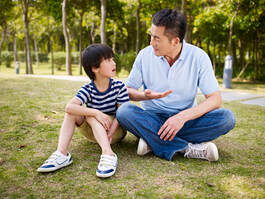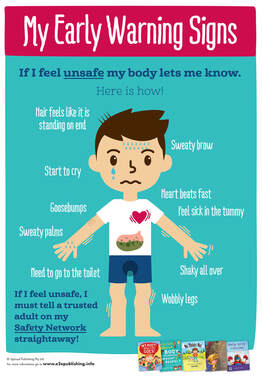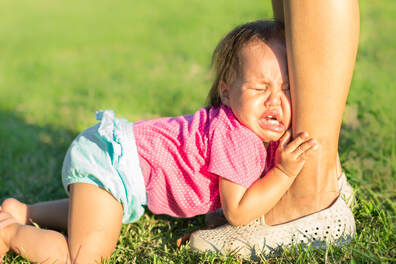A healthy relationship must start with mutual respect, and that includes respecting each other's physical and emotional boundaries.
But, what are boundaries? Personal boundaries are the physical, emotional and mental limits we establish to protect ourselves from being manipulated, used, or abused by others. Boundaries allow us to separate who we are and what we think and feel, from the thoughts and feelings of others. - https://www.essentiallifeskills.net/personalboundaries.html
Healthy boundaries can serve to establish one’s identity and are a very important component of self-care. Specifically, healthy boundaries can help people define their individuality and can help people indicate what they will and will not hold themselves responsible for.
But, what are boundaries? Personal boundaries are the physical, emotional and mental limits we establish to protect ourselves from being manipulated, used, or abused by others. Boundaries allow us to separate who we are and what we think and feel, from the thoughts and feelings of others. - https://www.essentiallifeskills.net/personalboundaries.html
Healthy boundaries can serve to establish one’s identity and are a very important component of self-care. Specifically, healthy boundaries can help people define their individuality and can help people indicate what they will and will not hold themselves responsible for.
How to establish healthy boundaries?
|
Define the desired boundary
The first part of setting boundaries is examining the boundaries that already exist (or are lacking) in one’s life. |
Communicate and stay simple
Not over explaining is a crucial aspect of setting boundaries, as everyone has the right to determine what they do and do not want to do. |
Say why it is important
When setting boundaries, it is important to explicitly state why they are important and which are the consequences. |
Healthy boundaries lead to healthy children
Parents need to establish healthy boundaries for their children to be safe and protected. Limits are good for kids. They teach them appropriate behavior and give them opportunities to develop personal skills. Sharing power and control works best when parents / caregivers have well-established limits and understand boundaries within the family.
A good way for parents to model healthy emotional boundaries is to take ownership of their own feelings. As a parent, you can think of a boundary as the line you draw around yourself to define where you end and where your child begins. Children should not feel responsible for the emotions of their parents, teachers, caregivers or other family members.
A good way for parents to model healthy emotional boundaries is to take ownership of their own feelings. As a parent, you can think of a boundary as the line you draw around yourself to define where you end and where your child begins. Children should not feel responsible for the emotions of their parents, teachers, caregivers or other family members.
How to teach kidsIt is very important for kids to learn to set boundaries and that takes being able to recognize what others want and need — and express what they want and need, too. The clue is a big emphasis on helping kids develop greater empathy and self-awareness. Kids learn better in real-life situations: "How do you think your brother felt when you pushed him away? How do you think Anna felt when you took her toy away without asking?" Using the feelings as a mirror for others can help create perspective. Explain that rules work in both ways: "People are in charge of their own bodies, and it’s not okay to touch them if they don’t want you to, just like it’s not okay for someone to touch you in a way you don’t like." |
Practice with different imaginary situations: helping a child to make a plan for what to do when someone isn’t respecting his feelings or boundaries will give your child the chance to practice standing up for himself. Be a role model; when it comes to learning anything, kids look to their parents for cues on how to behave. |
The Uh-Oh feelingIntuition is an innate survival mechanism that helps us sense potential danger or discomfort. By teaching children to trust their intuition, they become more aware of their surroundings and their own bodies so they can better assess whether a situation feels safe or not. Trusting their intuition can empower them to take action and protect themselves from potential harm.
Children may not always have the vocabulary or knowledge to articulate their discomfort or recognize abusive behavior explicitly, especially if they are young. However, their intuition and bodies can still send warning signals when something feels wrong. By teaching children to trust these warning signals, they will be able to better recognize red flags or unsettling behavior, enabling them to identify and report potential abuse at an earlier stage. It is important to note that while intuition is a valuable tool, it should be supported by knowledge, open communication, and the guidance of trusted adults. Teaching children to trust their intuition is just one piece of the puzzle in promoting their overall safety and well-being. |
Jayneen Sanders, an Australian experienced author, publisher and elementary school teacher, describes the "uh-oh feeling" in these simple warning signs:
|
Boundaries are not meant to punish, but are for well-being and protection.
Results of having healthy boundaries:✔ Self-confidence and a healthy self-concept
✔ Better communication skills ✔ Better and more fulfilling relationships ✔ More stability and control over our lives ✔ Less chance to be abused ✔ More clarity ✔ Less fear |
Results of not having healthy boundaries:- Going against personal values or rights in order to please others
- Expecting others to fulfill personal needs - Taking as much as you can for the sake of taking - Feeling bad or guilty when saying no - Not speaking up when treated poorly - Unwanted touching and sex - Touching a person without asking |
“The key to boundaries is respect for self and respect for others” - Edutopia.org
Then, why do boundaries get disrespected? Some times the person might have been raised with different boundary expectations, or maybe we may assume that “others think, act and behave the same as we do,” we also might not respect others’ boundaries because we want to be in control or protect the person, and, of course, it might be unintentional.
In order to respect someone else's boundaries it is important to focus on the word respect. We are all different and we come from different backgrounds so we must be careful in the way we communicate with others. It is also advisable to listen fully and pay attention to verbal and nonverbal cues.
|
Now that you've learned how important healthy relationships are, you are ready to confirm your knowledge in the following quiz. Please click HERE to take it. |
Here we share more articles about setting healthy boundaries for us and for children
Healthy boundaries and self-care |
Personal boundaries worksheet |
How to preserve better boundaries |
The importance of healthy boundaries for children |
Helping kids to learn boundaries
|
How to set healthy boundaries with your child |








